Black-legged polyporus (Picipes melanopus)
- Division: Basidiomycota (Basidiomycetes)
- Subdivision: Agaricomycotina (Agaricomycetes)
- Class: Agaricomycetes (Agaricomycetes)
- Subclass: Incertae sedis (of uncertain position)
- Order: Polyporales (Polypore)
- Family: Polyporaceae (Polyporaceae)
- Genus: Picipes (Pitsipes)
- Type: Picipes melanopus (Polyporus blackfoot)
- Tinder fungus
:
- Polyporus melanopus
- Boletus melanopus Pers
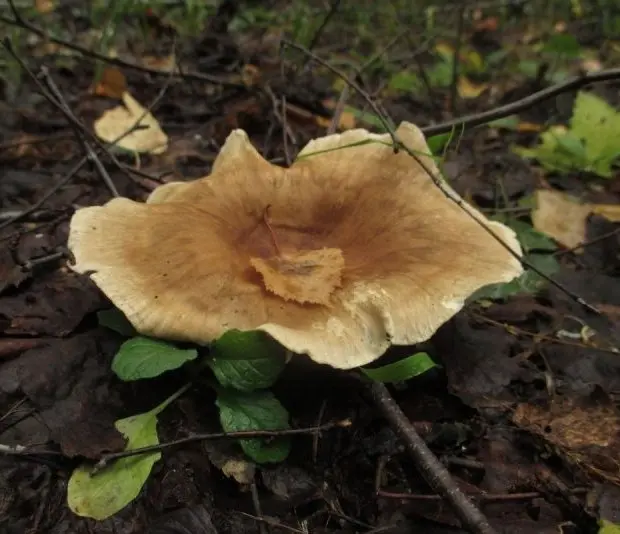
Black-footed polyporus (Polyporus melanopus,) is a fungus from the Polypore family. Previously, this species was assigned to the genus Polyporus (Polyporus), and in 2016 it was transferred to a new genus – Picipes (Picipes), so the actual name today is Black-legged Picipes (Picipes melanopus).
The polypore fungus called Black-footed Polyporus (Polyporus melanopus) has a fruiting body, which consists of a cap and a leg.
Cap diameter 3-8 cm, according to some sources up to 15 cm, thin and leathery. Its shape in young mushrooms is funnel-shaped, rounded.
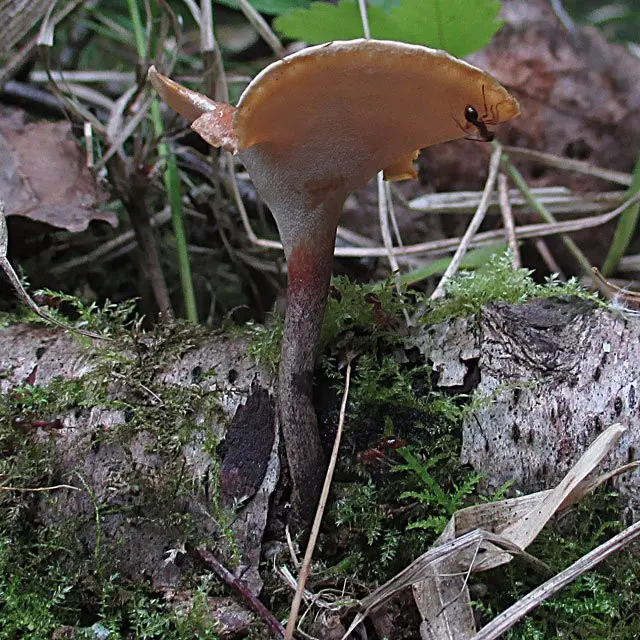
In mature specimens, it becomes kidney-shaped, has a depression near the base (in the place where the cap connects to the stem).
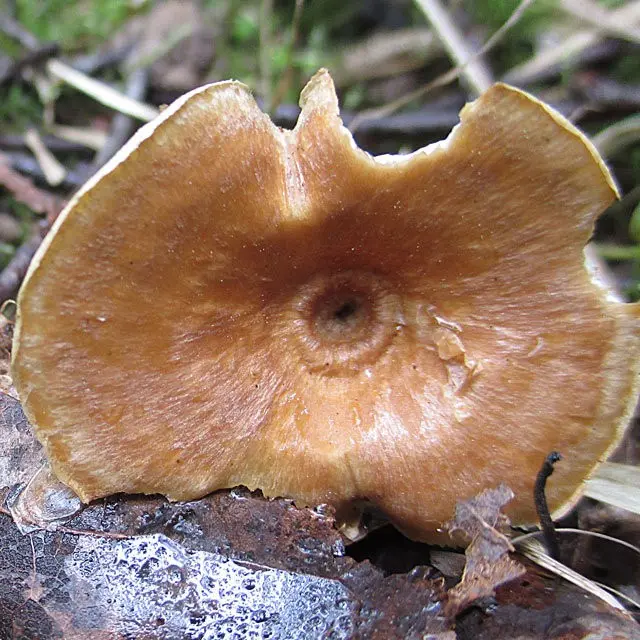
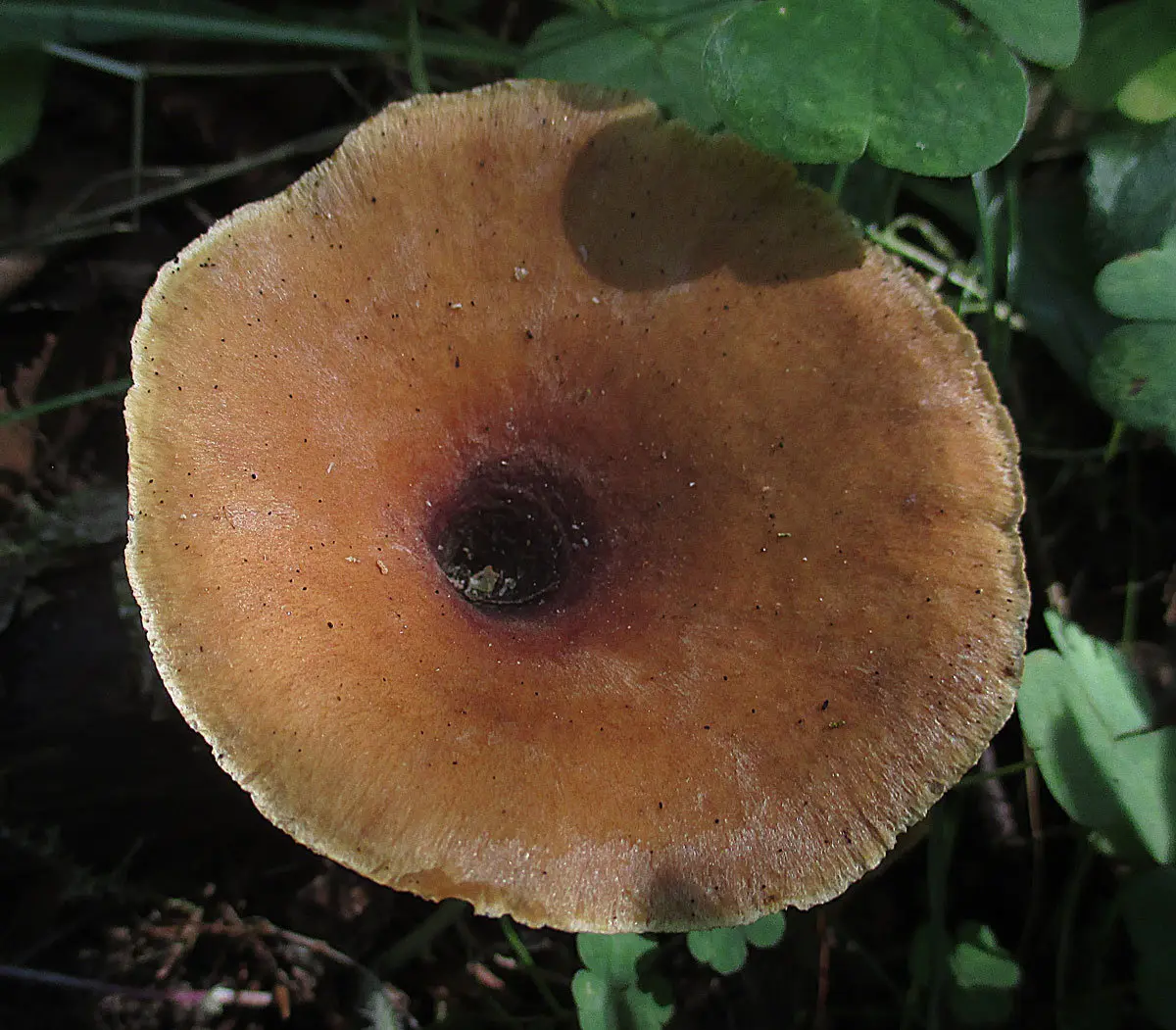
From above, the cap is covered with a thin film with a glossy sheen, the color of which can be yellow-brown, gray-brown or dark brown.
The hymenophore of the black-legged polyporus is tubular, located on the inside of the cap. In color, it is light or white-yellow, sometimes it can slightly go down the mushroom leg. The hymenophore has small rounded pores, 4-7 per 1 mm.
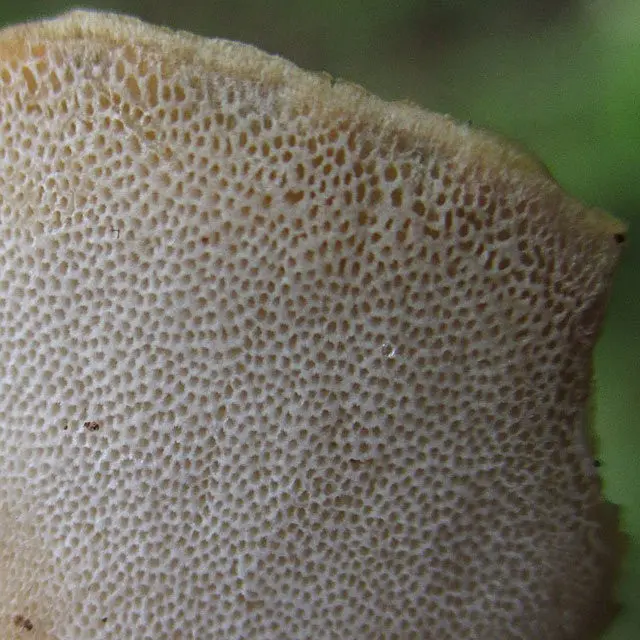
In young specimens, the pulp is loose and fleshy, while in ripe mushrooms it becomes hard and crumbles.
The stem comes from the center of the cap, sometimes it can be a little eccentric. Its width does not exceed 4 mm, and its height is not more than 8 cm, sometimes it is bent and pressed against the hat. The structure of the leg is dense, to the touch it is gently velvety, in color it is more often dark brown.
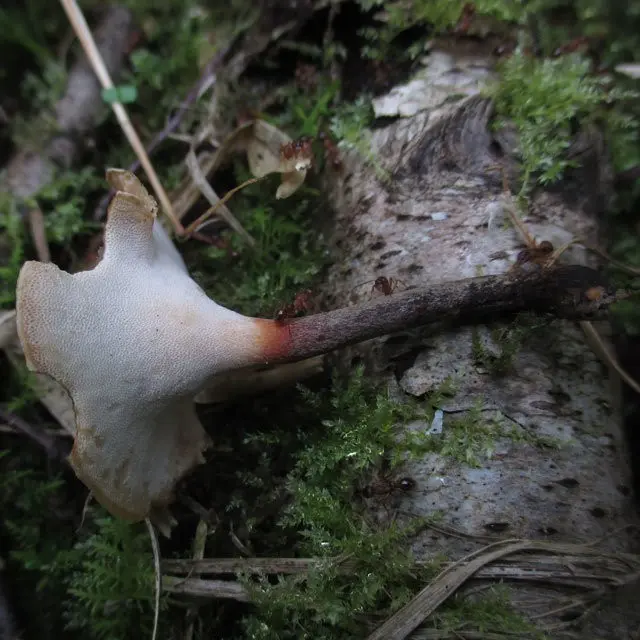
Sometimes you can see several specimens fused with each other with legs.
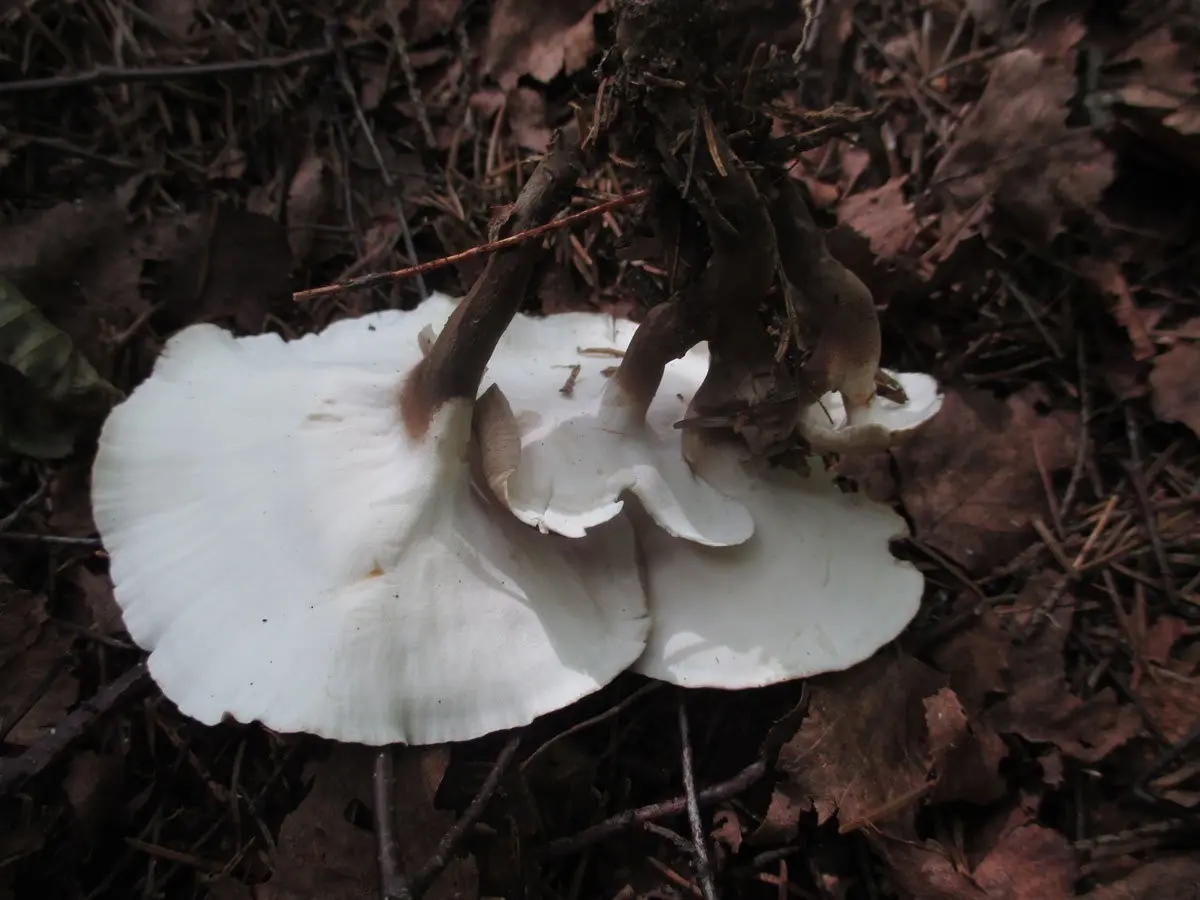
The black-footed polyporus grows on fallen branches and foliage, old deadwood, old roots buried in the soil, belonging to deciduous trees (birches, oaks, alders). Individual specimens of this fungus can be found in coniferous, fir forests. The fruiting of the black-footed polyporus begins in mid-summer and continues until late autumn (early November).
The species is widely distributed in regions of Our Country with a temperate climate, up to the territories of the Far East. You can rarely meet this mushroom.
Black-footed polyporus (Polyporus melanopus) is classified as an inedible mushroom species.
Polyporus black-legged cannot be confused with other varieties of mushrooms, because its main difference is a dark brown, thin stem.
Photo: Sergey









